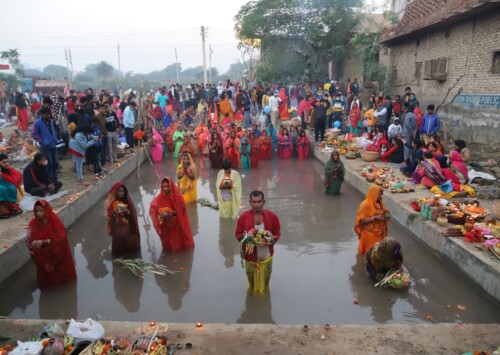5 Hollywood movies inspired by real newspaper stories
Fact stranger than fiction

Newspaper and magazine articles have influenced filmmakers to create memorable films on a variety of topics
Iconic films inspired by newspaper articles reveal how true stories from journalism have shaped movie plots across genres, blending facts with cinematic storytelling.

Newspaper and magazine articles have influenced filmmakers to create memorable films on a variety of topics
Some of the most compelling stories in films are based on real-life dramas that journalists have documented rather than a fictional story. Newspaper and magazine articles have influenced filmmakers to create memorable films on a variety of topics, including medical mysteries, subcultural in-depth analyses and terrifying true crime. These five films each turned fact into a compelling story whose plots originated on the printed page.
Bigger Than Life (1956)

The movie is based an article in The New Yorker titled Ten Feet Tall
The scathing portrayal of suburban decay in Nicholas Ray’s Bigger Than Life has journalistic roots. The movie is based an article in The New Yorker titled Ten Feet Tall, that was written by Berton Roueché and which was published in 1955, describing the terrifying experience of a New York schoolteacher who went into psychosis after receiving cortisone treatment for a rare illness. The psychological and familial effects of this medical ‘miracle drug’ are dramatised in Ray’s film, which stars James Mason as Ed Avery.
According to Roueché, cortisone, which was heralded as a miracle treatment, caused severe side effects like violent mood swings and grandiose delusions that could have destroyed the patient’s family life. Ray changed the plot to an existential crisis after becoming dissatisfied with the original script’s emphasis on the medical case. He did this by exposing the sinister undertones of 1950s American respectability through the use of vivid colour and cramped framing. The end product is a movie that questions not only medicine but also the foundation of middle-class society.
A Nightmare on Elm Street (1984)

Freddy Krueger, the supernatural antagonist of Wes Craven’s A Nightmare on Elm Street, is a legendary character
Freddy Krueger, the supernatural antagonist of Wes Craven’s A Nightmare on Elm Street, is a legendary character, but the real horror of the movie is grounded in reality. Articles from the Los Angeles Times in the late 1970s and early 1980s about Southeast Asian refugees, especially those from the Hmong and Khmer communities, who perished inexplicably while they slept after escaping war-torn Cambodia and Laos served as inspiration for Craven.
Similar to Craven’s fictional victims, these cases, sometimes referred to as “sudden unexplained nocturnal death syndrome”, involved young men who were afraid to sleep, plagued by nightmares and ultimately passed away during the night. Craven recalled reading about a boy who eventually passed out after refusing to sleep for days, only to be discovered dead by his parents after they heard screams. Elm Street’s spooky authenticity came from the way it blended supernatural terror with real-life tragedy.
The Killing Fields (1984)

The movie is based on the article The Death and Life of Dith Pran from the New York Times Magazine
Sydney Schanberg, a reporter for the New York Times and Dith Pran, a colleague from Cambodia, both fought to survive and report during the Khmer Rouge regime. Their terrifying true story is told in The Killing Fields. The movie is based on the article The Death and Life of Dith Pran from the New York Times Magazine, which detailed Pran’s ordeal and Schanberg’s search for him following the fall of Phnom Penh.
The emotional core of the film was modelled after the article’s uncompromising depiction of friendship, survival and the atrocities of genocide. The film’s journalistic basis is what gives it its power; it raises awareness of the Cambodian tragedy and the personal toll of witnessing.
Saturday Night Fever (1977)

The film’s genuine atmosphere and character-driven plot were inspired by the article’s vivid portrayal of disco subculture
Nik Cohn’s article Tribal Rites of the New Saturday Night in New York Magazine served as the inspiration for Saturday Night Fever before John Travolta walked across the dance floor. The work delved into the world of Brooklyn’s disco youth, documenting the customs, goals and hardships of working-class teenagers who turned to dance clubs for solace.
The film’s genuine atmosphere and character-driven plot were inspired by the article’s vivid portrayal of disco subculture, even though Cohn later acknowledged that he had embellished some details. Although Saturday Night Fever became a cultural phenomenon, its origins can still be traced back to the astute observations of a magazine journalist who was present at the time.
Bling Ring (2013)

Nancy Jo Sales’s article The Suspects Wore Louboutins in Vanity Fair, which described the group’s adventures
The Bling Ring, directed by Sofia Coppola, dramatises the real-life tale of teenage celebrities who broke into the homes of famous people. Nancy Jo Sales’s article The Suspects Wore Louboutins in Vanity Fair, which described the group’s adventures and the social media-driven culture that made them possible, served as the basis for the movie.
Coppola used Sales’s meticulous reporting and psychological understanding as a guide to examine themes of celebrity, entitlement and the hazy boundary between criminality and aspiration. The dialogue and scenes in the movie frequently mirror the observations and interviews in the article, highlighting the mutually beneficial relationship between journalism and film.
These films show the timeless ability of journalism to reveal taboo subjects, reveal unsettling realities and supply the basis for compelling cinematic narratives. In addition to providing entertainment, filmmakers who turn headlines into stories encourage viewers to consider the issues that the stories are based on.









